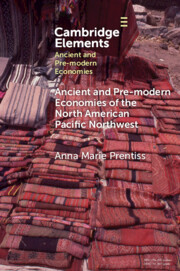Refine search
Actions for selected content:
26945 results in Economic history
1 - The Price of Power
-
- Book:
- Why Populism?
- Published online:
- 17 March 2023
- Print publication:
- 06 April 2023, pp 1-23
-
- Chapter
-
- You have access
- HTML
- Export citation
4 - Democracy’s Children
-
- Book:
- Why Populism?
- Published online:
- 17 March 2023
- Print publication:
- 06 April 2023, pp 92-131
-
- Chapter
- Export citation
Contents
-
- Book:
- The Collapse of Nationalist China
- Published online:
- 10 March 2023
- Print publication:
- 30 March 2023, pp v-v
-
- Chapter
- Export citation
Figures
-
- Book:
- The Collapse of Nationalist China
- Published online:
- 10 March 2023
- Print publication:
- 30 March 2023, pp vi-vi
-
- Chapter
- Export citation
Glossary
-
- Book:
- The Collapse of Nationalist China
- Published online:
- 10 March 2023
- Print publication:
- 30 March 2023, pp 212-214
-
- Chapter
- Export citation
Conclusion
-
- Book:
- The Collapse of Nationalist China
- Published online:
- 10 March 2023
- Print publication:
- 30 March 2023, pp 203-211
-
- Chapter
- Export citation
Acknowledgments
-
- Book:
- The Collapse of Nationalist China
- Published online:
- 10 March 2023
- Print publication:
- 30 March 2023, pp vii-x
-
- Chapter
- Export citation
Chapter 4 - 1946
-
- Book:
- The Collapse of Nationalist China
- Published online:
- 10 March 2023
- Print publication:
- 30 March 2023, pp 111-130
-
- Chapter
- Export citation
Index
-
- Book:
- The Collapse of Nationalist China
- Published online:
- 10 March 2023
- Print publication:
- 30 March 2023, pp 265-270
-
- Chapter
- Export citation
Copyright page
-
- Book:
- The Collapse of Nationalist China
- Published online:
- 10 March 2023
- Print publication:
- 30 March 2023, pp iv-iv
-
- Chapter
- Export citation
Chapter 1 - Ichigo and Its Aftermath
-
- Book:
- The Collapse of Nationalist China
- Published online:
- 10 March 2023
- Print publication:
- 30 March 2023, pp 18-40
-
- Chapter
- Export citation
Chapter 2 - Hyperinflation and the Rivalry between T. V. Soong and H. H. Kung
-
- Book:
- The Collapse of Nationalist China
- Published online:
- 10 March 2023
- Print publication:
- 30 March 2023, pp 41-79
-
- Chapter
- Export citation
Bibliography
-
- Book:
- The Collapse of Nationalist China
- Published online:
- 10 March 2023
- Print publication:
- 30 March 2023, pp 254-264
-
- Chapter
- Export citation
Notes
-
- Book:
- The Collapse of Nationalist China
- Published online:
- 10 March 2023
- Print publication:
- 30 March 2023, pp 215-253
-
- Chapter
- Export citation
Chapter 6 - 1948
-
- Book:
- The Collapse of Nationalist China
- Published online:
- 10 March 2023
- Print publication:
- 30 March 2023, pp 165-202
-
- Chapter
- Export citation
Introduction
-
- Book:
- The Collapse of Nationalist China
- Published online:
- 10 March 2023
- Print publication:
- 30 March 2023, pp 1-17
-
- Chapter
- Export citation
Chapter 3 - Sudden Surrender and Botched Liberation
-
- Book:
- The Collapse of Nationalist China
- Published online:
- 10 March 2023
- Print publication:
- 30 March 2023, pp 80-110
-
- Chapter
- Export citation
Chapter 5 - 1947
-
- Book:
- The Collapse of Nationalist China
- Published online:
- 10 March 2023
- Print publication:
- 30 March 2023, pp 131-164
-
- Chapter
- Export citation

Ancient and Pre-modern Economies of the North American Pacific Northwest
-
- Published online:
- 29 March 2023
- Print publication:
- 27 April 2023
-
- Element
- Export citation
7 - Illegality Normalized
-
- Book:
- <i>Marché Noir</i>
- Published online:
- 16 March 2023
- Print publication:
- 23 March 2023, pp 173-199
-
- Chapter
- Export citation
